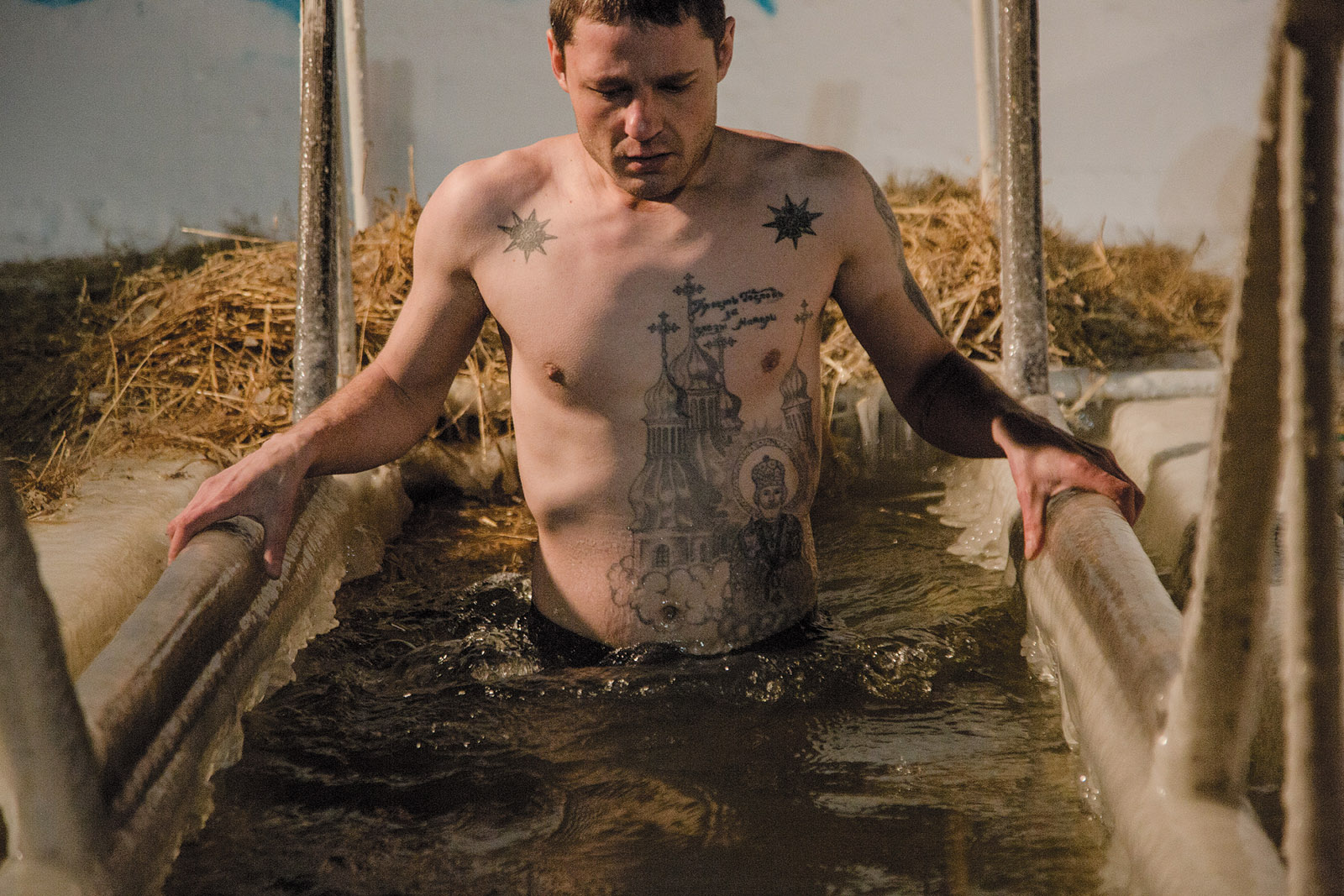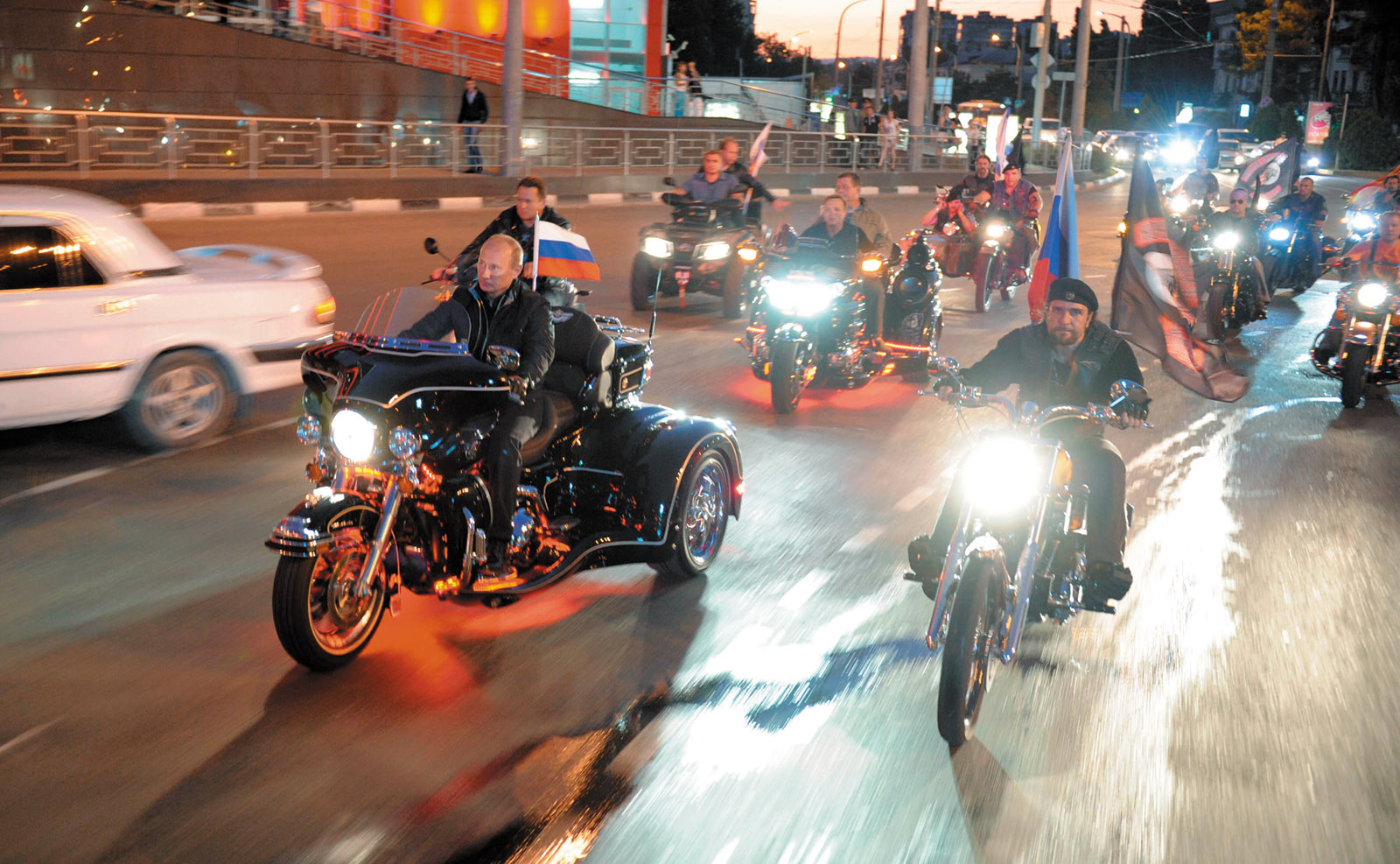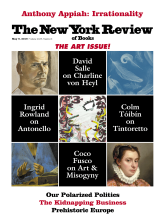Vor is the Russian word for “thief,” but in Russia, the vory, or vory v zakone (“thieves in the code”), were more than thieves. They were something like made men, or even mafia dons—initiates into the vorovskoi mir (the “thieves’ world”), which was distinct from Russia’s much larger blatnoy (“criminal”) world and governed by its own set of unwritten, inflexible rules. The vory were creatures of the Gulag—imprisonment being a requirement for inclusion—and rare creatures at that. In the West, you caught glimpses of them in Alexander Solzhenitsyn’s Gulag Archipelago and in Eugenia Ginsburg’s memoirs; in his Kolyma Tales, Varlam Shalamov discussed them at length.
In the Soviet Union, where these works were banned, the vor’s slang and stories informed the blatnye songs Vladimir Vysotsky was playing in the early 1960s. But by and large, the vory themselves had died out by then. Their short, brutal history is at the center of a recent study by Mark Galeotti, a well-known scholar, security consultant, and sometime member of the British Foreign and Commonwealth Office. But Galeotti’s subtitle, “Russia’s Super Mafia,” speaks more to their legacy. What does “lawlessness” mean, he seems to be asking, in a place where the rule of law has become, or always has been, a fiction?
There were bandits in tsarist times, too, of course. Galeotti quotes Nicholas I, who is supposed to have told his ten-year-old son, “I believe you and I are the only people in Russia who don’t steal.” Prerevolutionary Russia was underpoliced, and its policemen and bureaucrats were underpaid, to the extent that bribery was factored into their salaries. In the countryside, lynch law prevailed. “Was this a crime,” Galeotti writes,
or was it the commune policing itself? Needless to say, the state resented and feared the notion of peasants taking the law into their own hands, but there was very little it could do, given the strength of the peasants’ own moral code and the practical difficulties of mounting day-to-day policing of such a huge country.
Aside from small, localized guilds made up of thieves or beggars, Russian organized crime did not exist, in a meaningful sense, until industrialization and the concurrent rise of inner-city slums. These were the “pits” that the Russians called yamas: St. Petersburg’s Hay Market Square, which Dostoevsky wrote about in Crime and Punishment; Odessa’s Moldovanka, where Isaac Babel’s fictional gangster Benya Krik ruled over an underworld that Babel had drawn from life.
The revolution that Babel lived through did not sweep this old world away. “The Russian Civil War of 1918–22 was the formative moment for the Bolsheviks and in many ways their abiding tragedy,” Galeotti writes.
Their reformist impulses and idealism were sacrificed in the name of survival, and, while the Reds won the war, they lost their soul. What was left was a brutal, disciplined and militarised regime, in which the cynical and the ruthless would rise fast and far…. In 1922, the ispolkom or executive committee running the southern Russian village of Novoleushkovskaya was reportedly run by one Ubykon, an infamous horse thief of pre-revolutionary times, who had been imprisoned for raping his twelve-year-old sister.
The revolution itself had been financed by criminal activities. Stalin, for instance, had been robbing banks, running protection rackets, counterfeiting, and kidnapping for ransom for the better part of a decade by the time his party took over the Duma. Cautiously, Galeotti endorses a claim by the Georgian crime lord Otari Kvantrishvili, who was gunned down outside a Moscow bathhouse in 1994, that it was not himself but “Vladimir Ilyich Lenin who was the real organiser of the mafia and who set up the criminal state.”
Under Lenin, political prisoners in the Solovki Special Camp, in Russia’s Far North, were turned into slaves—forced to work for their own upkeep, as well as for the good of the state. But when common criminals were funneled into the camps, a small subset of thieves refused to perform manual labor. They were the first vory v zakone, and as the Gulag spread across Russia and became, in Solzhenitsyn’s elegant formulation, “a continent—an almost invisible, almost imperceptible country,” they formed Russia’s first nationwide criminal network.
The vor’s code was strict: in the Gulag, thieves maimed themselves to avoid work; outside the Gulag, a vor was expected to get by on stealing and gambling alone. Thieves had to sever whatever ties they had had with the state, society, and their own families. Collaborating—even fraternizing—with the authorities was unthinkable. Vory could not serve in the army, pay taxes, or involve themselves in political activities. They had to pay into their own common fund (their obshchak), but in theory, they were not covetous—owning too much of anything, or anything at all, was just one more way of tying oneself to the state—nor were they violent, unless violence was absolutely necessary. Killing lay outside the code (a rule that may have been honored more in the breach). For all the stories that came to surround them, most of the vory were simple pickpockets. And yet, as their code and their legend spread throughout the camps, they became de facto rulers—the dons of the Gulag.1
Advertisement
The slang that the vory employed was almost a language of its own. Bodyguards were byki, or “bulls”; bullies were chainiks, or “teapots.” To “soak” someone was to kill them. (The terms—“wet work” and mokroye delo—are identical in English and Russian.) Like the Yakuza, thieves-in-law covered themselves with tattoos. The vory recognized no higher authority, except for that of the skhodka (“thieves’ council”) when one was convened. They saw themselves as “honest thieves” in a dishonest world. In fact, they were a terrible menace. “A minority even amongst the criminals, they contented themselves largely with preying on the petty and political prisoners,” Galeotti writes. “They terrorised and abused them, stealing their food and clothing, forcing them from the warmer bunks in the barracks, beating, even raping, with virtual impunity.”
The vor’s reign of terror, which ran parallel to the state’s, lasted well into the 1940s. Then, during the suchya voina—the “bitches’ war,” which broke out in 1948—the thieves’ code began to break down. In the first years of the second world war, Stalin had amnestied close to one million prisoners and drafted them into the army. These convicts, who had been promised their freedom, found themselves back in the camps when the fighting was done. By the thieves’ code, they were suki—bitches who had put on uniforms and picked up arms for the state. But these suki outnumbered the vory, and they had been battle-hardened. Along with Soviet troops who had been sent to the Gulag upon repatriation (those who had been taken as POWs or had fought for the Germans in General Andrei Vlasov’s Russian Liberation Army), they were the first prisoners who managed to stand up to the vory. Gulag administrators encouraged their acts of resistance. In one mining camp, 150 well-armed suki were sent into battle with a hundred unarmed thieves. “The result was a massacre,” Galeotti writes. Ten thieves surrendered, becoming suki themselves, while the rest were killed.
The suki won their war. They tattooed themselves if they weren’t tattooed already, absorbed the thieves’ slang, and started to call themselves vory v zakone. In doing so, they debased the thieves’ code even further. These new vory worked inside the camps as stool pigeons, supervisors, and enforcers. Collaboration with state security forces became the norm, rather than an offense punishable by excommunication or death, and this, more or less, is where things stand today.
The next generation of Russian gangsters grew up in and around the Brezhnev-era black markets, smuggling, shaking down fruit-sellers and merchants, and providing protection from similar shakedowns. In effect they were already a mafia, but it was Mikhail Gorbachev who gave birth to the thieves that Russians, and the rest of us, live with today. In 1985, following the death (from cirrhosis, among other things) of Konstantin Chernenko, Gorbachev became head of the Communist Party. Almost immediately, he launched a far-reaching anti-alcohol campaign. Prices on spirits were raised, production was cut, and access to liquor and wine was curtailed drastically. While the campaign was in force, Russia’s drinking age was raised from eighteen to twenty-one, workers found to be drunk on the job were punished (the fines could equal two weeks’ wages), and moonshiners were heavily fined or sent to prison.
In the short term, these measures worked. There were fewer workplace accidents, fewer deaths caused by drunk driving, and fewer incidents of domestic violence. Overall, mortality rates fell dramatically. But for the gangsters, Gorbachev’s temperance campaign was a godsend. Bootlegging “provided the criminals with not only a market but a constituency,” Galeotti writes. Suddenly, thieves were welcome everywhere, and honest citizens—ones who had never encountered a vor—were glad to make use of their services. “People were pleased to see us, they would smile and joke, offer us cigarettes,” a criminal explains. “They would ask us what we had today, like we were shopkeepers.”
Economic measures introduced under perestroika also had unintended consequences. In 1988, the Law on Cooperatives made it possible for Russians to open small legal businesses, which immediately attracted the attention of the protection rackets. At the same time, wrestlers, boxers, martial arts experts, amateur bodybuilders, and Afgantsy (veterans of Russia’s war in Afghanistan) formed private security companies and offered their services, which could cost enterprises as much as 30 percent of their revenues. Very quickly, having a krysha (a “roof”) became the cost of doing business in Soviet Russia. The courts were corrupt. The police were corrupt and impotent. A true, modern-day mafia began to emerge. And then, just as quickly, the country collapsed.
Advertisement
Vouchers that Boris Yeltsin’s government passed out to all Russian citizens could be exchanged for shares of state companies that the government was privatizing. But the one voucher each citizen got was worth very little, about $8.30, in Galeotti’s estimate; people sold theirs for pennies. In 1993, Galeotti watched individuals get bussed to Moscow street corners, where they stood and held up signs that read, “I Buy Vouchers.” Many “were working for organized crime,” he writes:
The gangs aggregated the vouchers into meaningful batches and either used them or, far more often, sold them on to managers eager to take over their own enterprise, or to the rising oligarchs out shopping for bargains. Thus, Russian organized crime was from the first not just part of the emerging system but a stakeholder able to help shape its evolution.
The Vory is less a history of Russian organized crime than an anatomy of latter-day criminal rackets. Each chapter is split into dossier-like sections—“The protection market and its understandings,” “‘Pax Mafiosa’ or global economy?”—based on first-hand observations, interviews with criminals and law enforcement officials, and several decades’ worth of research. As the book moves into the 1990s—boom years for Russian gangsters—its tone begins to turn elegiac.
In part this is because, under Yeltsin’s administration, Russia’s gangsters killed each other off in ever-increasing numbers. But at the same time, a new class of criminal was starting to emerge. This was the avtoritet (the “authority”), a crime boss who had legal holdings as well as illegal ones, and would have been hard-pressed to explain the difference between himself and other Russian capitalists. “In the early years,” one tells Galeotti, “we fought because we had to, but [under Yeltsin], we could settle down and become businessmen rather than generals.” Testifying before the House Committee on Banking and Financial Services, in 1999, former CIA Director James Wolsey said:
If you should chance to strike up a conversation with an articulate, English-speaking Russian in, say, the restaurant of one of the luxury hotels along Lake Geneva, and he is wearing a $3,000 suit and a pair of Gucci loafers, and he tells you that he is an executive of a Russian trading company and wants to talk to you about a joint venture, then there are four possibilities. He may be what he says he is. He may be a Russian intelligence officer working under commercial cover. He may be part of a Russian organized crime group. But the really interesting possibility is that he may be all three—and that none of those three institutions have any problem with the arrangement.
In 2000, Vladimir Putin took power and established a semblance of order. As he did so the avtoritety were absorbed into the state. “In many ways,” Galeotti writes, the Kremlin’s unspoken truce with the criminal class “paralleled Putin’s taming of the oligarchs, the mega-rich businessmen who had become such a politically powerful force under Yeltsin.” Criminal bosses who stuck to their rackets, cooperated with state security forces, and didn’t interfere in politics were allowed to thrive. Those who did not were eliminated or sent into exile. By then, Galeotti points out, the turf battles of the 1990s had already been settled. Organized crime had become bureaucratic, more business-minded than bloody, and when blood was called for, “it was in a far more precise and targeted way, the sniper’s bullet supplanting the indiscriminate car bomb or drive-by shooting that had been such a bloody fixture” of the Yeltsin era.
The price that Russians have paid, in the course of normalizing corruption, graft, and occasional violence, is one that Americans would do well to consider. At the street level, there is the vogue for criminal style, criminal speech, and criminal ballads—russky shanson—that might be compared to the narcocorridos sung in Mexico to commemorate drug lords. At the imperial level, there is Putin’s macho posturing, his own public and pointed use of thieves’ slang (including his famous threat to “soak” Chechen terrorists “in their shithouses”), and his close embrace of the Night Wolves, a thuggish gang of bikers he’s been known to ride with (albeit on a three-wheeled motorcycle).
From the highest levels on down, terminal cynicism has become endemic, even integral to society’s workings. “Putinism appealed directly to cynicism,” the scholar Greg Afinogenov has written. “The substance of the appeal was not the preservation of democratic institutions but their increasing irrelevance. Everyone knew the score, and it was by virtue of knowing the score that one became a supporter of the regime.”2 Of course, in the twentieth century, Soviet citizens were cynical, too. But there was at least the idea that things could be different, and were in fact different elsewhere. These days, Russia’s meddling in foreign banking systems and foreign elections is no more or less than an extension of the idea that brute force, corruption, and sneering contempt for the law—the thieves’ way, reduced to its essence—is just the way of the entire world.
And what of the vory v zakone, who defined themselves in opposition to a body politic that seems, finally, to have absorbed them? For all intents and purposes, they no longer exist outside of national memory. (“We have been infected by the rest of you and we are dying,” one old hand tells Galeotti, who adds, “the infection has passed both ways.”) There is no reason to mourn their passing. And yet the vory had their laws and codes, however brutal. Whatever nostalgia Russians feel for them now might also be seen as a form of longing for codes and covenants, of any kind, and as a measure of the social fabric’s unraveling.





